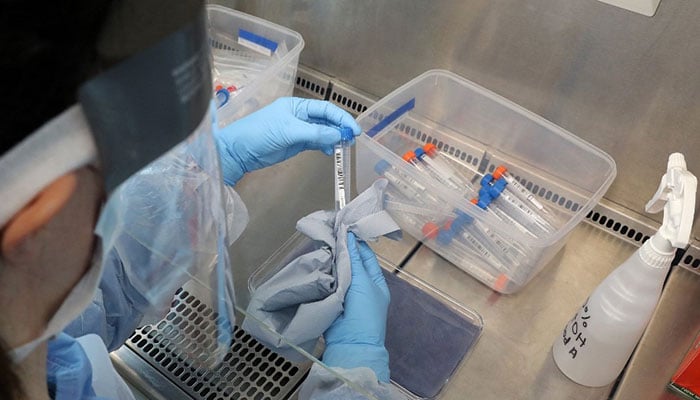Pool testing in Pakistan: Test more with fewer kits
May 11, 2020

Last month, both Punjab and the Khyber Pakhtunkhwa province promised to expedite coronavirus testing by carrying out “pool” or “group testing”.
Khyber Pakhtunkhwa’s health and finance minister Taimur Khan Jhagra tweeted in April that with mass or community diagnosis the province's testing capacity would grow by three to five times.
What is pool testing?
Pool testing is a way to screen large number of people for COVID-19 even if they are asymptomatic.
In this method, sample of several people from a household, or an area, are taken by collecting specimens from their nose or throat. The swabs are then combined and tested by the real-time polymerase chain reaction (RT-PCR) technique, all in one go.
On testing, if the pooled samples result in a combined negative, then all samples in the pool are cleared. If not, then each sample is individually tested to identify people who are infected with coronavirus.
The testing strategy speeds up results, as each swab doesn’t require a diagnostic kit. Moreover, it reduces pressure on laboratories, does not require a large number of testing kits, helps trace out potential virus carriers, especially those with no symptoms, and can ultimately assist in combating the spread of the deadly virus.
How success has mass testing been?
While several countries are still debating whether to go the pool testing way, Israel, Germany and a few states in North America have implemented the technique with encouraging results.
In Israel a medical center pool tested up to 32 and 64 people in one go.
In Germany, the German Red Cross Blood Donor Service, Frankfurt, combined the samples of 50 patients.
As per the Science, an online medical journal, around 19 test kits would be sufficient to test 100 individuals.
However, the journal further adds that the optimal group size, of people to be tested, depended on the country’s population and its expected positive cases. “For example, if one per cent of the samples are expected to test positive, the optimal group size will be 11.”
Pakistan, to date, has conducted 294,894 tests across the country, of which over 30,000 have tested positive. Since the country’s positive rate is 10 percent, the optimal group size will be four, as per the Science’s formula.











